Egypt
Under a fan in Old Cairo, Ahmed Othmane embroiders a thick black cloth of Quranic verses with gold thread, just like the ones his forefathers made for Mecca, Islam's holiest city.
One hundred years ago, the Othmane family's creations were sent to Mecca with great fanfare to cover the Kaaba, the cubic building to which Muslims around the world turn to pray.
Today, in his workshop in Khan el-Khalili, the tourist market of Cairo, like all his colleagues, this 51-year-old craftsman must face the soaring prices of raw materials, the drastic decline in tourism, a purchasing power of Egyptians in free fall and a youth reluctant to work in the craft.
In 1924, Mr. Othmane's grandfather had the supreme honor of embroidering the "kiswa", the black drapery covering the Kaaba, which houses in its eastern corner the Black Stone, a betyl venerated since pre-Islamic Arabia and today a sacred relic of Muslims.
This 658-square-meter fabric of natural silk embroidered with precious metals -- gold or silver -- is changed every year for the hajj, the great pilgrimage to Mecca.
"It was a sacred ritual," Othmane recalls. "From one year to the next, ten artisans would sew the kiswa with silver threads," so delicate, he says, that it takes a day for 10 to 20 cm of embroidery.
- Mecca, Nasser and Putin -
This fabric has long been offered by various Muslim countries. From the 13th century onwards, Egyptian craftsmen shared its manufacture and embroidery. It was then transported to Mecca by the authorities. The procession of guards and clerics was cheered all along the way by jubilant Egyptians who sprayed it with rose water from their balconies.
From 1927 onwards, production began to relocate to Mecca, in the nascent kingdom of Saudi Arabia. Since 1962, the Kiswa is made in the holy city.
Mr. Othmane's father began embroidering military insignia, sometimes for famous clients, says his proud son: he decorated the uniforms of Egyptian presidents Gamal Abdel Nasser and Anwar al-Sadat.
And he even mended the badge of a KGB agent in Cairo, a certain ... Vladimir Putin.
But above all the Othmane family began "to embroider Koranic verses on tapestries" before reproducing elements of the kiswa, explains Mr. Othmane to AFP.
"Today, most of our customers want a replica of the kiswa down to the smallest detail," he adds.
For a piece of the fabric, it is necessary to count several thousands of dollars, whereas for small sizes, 100 Egyptian pounds (approximately five euros) are enough, he assures.
- Legacy -
Since Covid-19, he sells only about "two pieces per month", while before, he says, he sold every day at least one tapestry.
And if the tourists make a timid return, they "are more careful with their money because nobody knows what to expect" between the global pandemic and the war in Ukraine.
Despite everything, one thread after another, Mr. Othmane maintains the family tradition in his workshop where dark hangings delicately adorned with Koranic gilding are piled up.
Here, from father to son for more than a century, they practice the "taqsib", the art of embroidering verses of the Koran with gold or silver thread.
In the middle of his employees, back bent over their looms, Mr. Othmane, who learned it as a child from his father, wants "to keep this know-how alive and pass it on faithfully".
But recruiting young people is a challenge, he says, because "they can earn 10 to 15 euros driving" a touk-touk or a minibus, which transport a good part of the 25 million Cairoites every day, "rather than breaking their backs in an embroidery workshop.
Today, according to Mr. Othmane, there are only about ten "authentic" embroiderers left.
But he is determined to maintain this heritage in Egypt. For it is there that his grandfather decided to put his bags and his loom after leaving his native Turkey a century and a half ago.




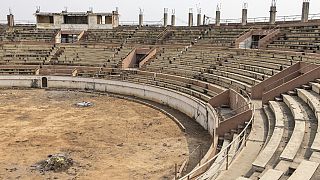
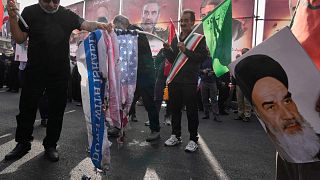
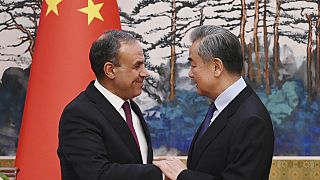
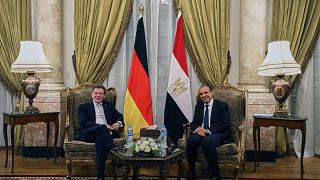
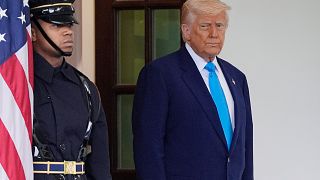
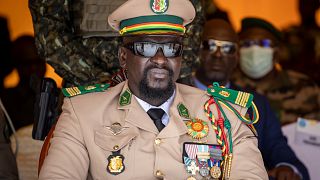

01:05
Ethiopia's mega-dam on the Nile is "now complete", Prime Minister says
00:54
Kaaba’s sacred cover replaced ahead of islamic new year
00:58
Ghana's parliament approves $2.8 billion debt restructuring deal
00:54
Mali court places Canada's Barrick gold mine under provisional administration
01:21
South Africa buries unclaimed bodies of illegal miners
01:10
Muslim pilgrims circle Mecca's Kaaba as Hajj ends